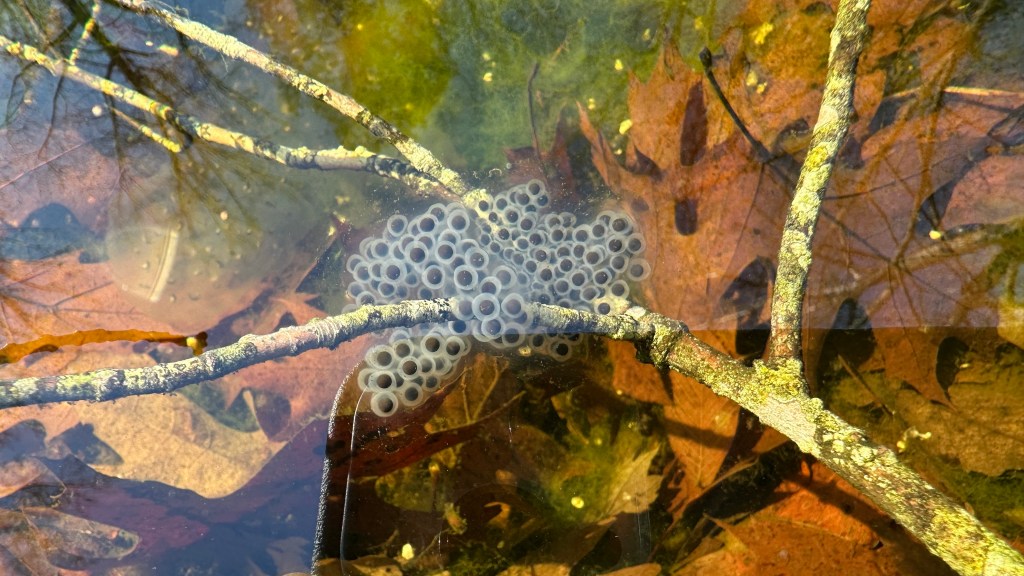The present was an egg laid by the past that had the future inside is shell.
~Zora Neale Hurston
This is a quick follow-up to my last post about the breeding congress of Spotted Salamanders two nights ago. I went out last night around 10 pm and checked both pools. In the murky pool (lots of vegetation and leaf debris on the bottom), I saw four female salamanders on twigs, ready to start laying eggs. In the clearer pool, I saw three female salamanders clinging to twigs underwater. They were all in the typical egg-laying position, holding onto the twigs with their hind legs, but no eggs yet. When Melissa photographed a salamander two weeks ago actually laying eggs, it was about midnight. I wonder if they wait until later in the evening to start egg-laying?
I lowered my camera into the water to try to get a photo but either the light or the movement disturbed all three females and they released their hold and swam beneath the leaves on the bottom of the pool. I decided to leave them alone and let them do their thing without bright lights shining on them, so I headed inside.
This morning I went out to check on the results of their night-time activity.

-A 12-hour old Spotted Salamander egg mass in our wildlife pool (click photos to enlarge))
I can see twelve new egg masses in the clear water pool. If the three females I saw were the only ones to lay, that’s an average of 4 egg masses per female, which coincides with what I have read in the scientific literature.

-A photo showing last night’s egg masses (three in the lower center of the photo) along with egg masses laid two weeks earlier on January 30
You can see how the egg masses swell with water over their first several days by comparing the sizes of those laid two weeks earlier with the fresh ones from last night. It looks like they swell 3 or 4 times their original size. Each egg mass contains anywhere from 100 to up to 250 eggs, so we are talking about another banner year for salamander eggs in our yard. And the season probably isn’t over yet if we get any more heavy night-time rains in the next few weeks. I’ll keep you posted.

Wow! Just WOW! Thank you for introducing me to salamanders. I had no idea about these behaviors. The egg-laying is fascinating. Now I need to find out more about Illinois salamanders. Your posts are interesting!
Thanks, Cathy.
That’s a lot of future babies!!!
Indeed. We will probably have some overwintering as larvae again (maybe not enough food in our ponds to support this many larvae), but the current larvae (that overwintered last year) are going to have a feast of little cousins when the new ones hatch.
Thank you for this wonderful photo journey of one of my favorite creatures, once again. I still have a short video from your talk to Chatham Extension MG’s; you brought a glass cylinder of eggs & hatchlings swimming in greenish pond water. Wish they were in my backyard menagerie! Question: how deep is the water in your pond to lure these wonderful creatures year after year? I think I remember you said there is no agitation or pump in their favorite site. I have the ‘privilege’ of hosting the small red salamanders in my backyard and courtyard areas. One even popped its head out of my idle compost barrel last fall – guessing perfect buggy dark and damp conditions.
AL Cobb
Sent from ALC
Hi Al…the waterfall pond is probably 16 inches at its deepest and the other one probably about a foot deep, though most of it is shallower. When you say you have small red salamanders…are those red efts (the terrestrial stage of Eastern Spotted Newts)? Those are cool. We have some adults in our ponds but they have plasticity in life cycle and, if conditions are stable and good, they may forego that terrestrial stage.